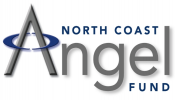 Monday, October 10, 2016 Monday, October 10, 2016 Assurex Health: The Right Call Saved the Company from a Near-Death ExperienceBy: Cheryl Isen, Media Relations for Angel Capital Association Assurex Health is one of three companies that won the Luis Villalobos Award for innovation that also had an exit within one month in 2016. Details on each of the exits are included in three blog posts on October 10.
Assurex Health is a personalized medicine company dedicated to helping healthcare providers get the genetic information they need to determine the right medication for individual patients suffering from neuropsychiatric and other medical conditions. Assurex Health’s proprietary technology is based on pharmacogenomics— the study of the genetic factors that influence an individual’s response to drug treatments—as well as evidence-based medicine and clinical pharmacology. The “GeneSight” test was developed in the Assurex Health clinical laboratory and is based on patented technology licensed from two world renowned medical centers, Mayo Clinic and Cincinnati Children’s Hospital Medical Center, which continue to be research collaborators. Tony Shipley who is Chairman of Queen City Angels, the angel group which led the initial investment, shares the lessons learned on the way to a win: As early investors, we had an opportunity to support Assurex and directly experience their growth from two employees and zero revenue, to more than 500 employees and $60 million in revenue. We also learned a lot of important lessons along the way. For example, when we first heard their pitch we saw the potential. The company was developing patented technology invented by researchers at Cincinnati Children’s Hospital and Medical Center. They also licensed technology from the Mayo Clinic. Both organizations were early stakeholders. When we moved forward to invest, a first critical step was to put together a term sheet that included the specific milestone of merging the technologies from both organizations. Like all angels, early on we rolled up our sleeves and worked closely with the company. We had a Board seat and worked on strategy. We helped the company determine the best path forward and funding options. We put multiple rounds of funding together—all the time thinking strategically about funding for an exit or perhaps a larger VC round. Over time as the company grew and added VC funding, our role as angels was less direct and smaller. We came off the Board as it evolved to include insiders, VC’s and outside subject matter experts. There was a lot of learning along the way. For example, finding and working with the right partners wasn’t all smooth sailing. Deals like this—that require a lot of funding – can often lead to a near-death experience. We were not immune to this with Assurex. In 2011 the Board worked on a deal for a VC investment. However, the day before the deal was set too close, changes were made to the term sheet. This left the Board of Directors with a big decision: Either agree to the unacceptable new terms, or go forward without the funding. They chose not to accept the modified terms—a testament to the strength and confidence of the Board in the company. Some quick maneuvering led to a bridge round through the local ecosystem. Then the Board actively sought a new VC firm to bring to the table and move forward with. The rest, they say, is history. Situations like this happen. It’s a real defining moment when you bring in VC money. You must have the right partners and the right structure to create a win for everyone. It’s critical to not only understand but also to be clear about what you’re trying to do, and to know what it will take. I give the Board a lot of credit for not getting pushed around by the wrong investor. They made a tough call under very stressful conditions. Their call was the right call. The Board also explored multiple paths to exit—from finding a strategic buyer to going public. At one point the company did attempt to go public, but the timing and market conditions didn’t support the move. Eventually discussions with a strategic buyer evolved into a term sheet. There was a strong sense that this was the right move for the company because it was a faster and safer exit that wasn’t as impacted by market swings. We were supportive because with money in the pocket, there was a reasonable opportunity to enhance returns. The resulting exit with Myriad Genetics was a win for investors and for the company. Tags: |







